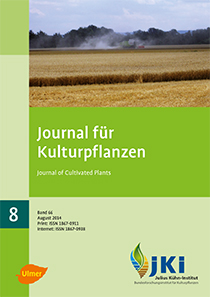Estimating the potential of renewable P containing raw materials in Germany as a substitute for fertilizers made from rock phosphate
Keywords:
Rock phosphate reserves, P-Recycling, P-fertilizing effectAbstract
Due to a re-evaluation of the worldwide P resources, estimates on economically mineable reserves increased from 16 Mt of rock phosphates in 2010 to 65 Mt in the year 2011. Conservative calculations still assume that P resources will be depleted within a maximum time span of 172 years. Already today (reference year: 2012) more than half of the yearly P demand in German agriculture (326 000–458 000 t P) is covered by farmyard manures and slurries (152 000–284 000 t P), while P containing mineral fertilizers supply about a quarter (124 000 t P) of the total demand. Further important P sources used in agriculture are rendering by-products (33 000 t P) and sewage sludge (12 000 t P). Being a subject of highly controversial discussion both among scientists and politicians over the last few decades, sewage sludge shall no longer be applied directly to the field according to the plans of the new German government. Therefore, it is even more important to further advance P recycling from waste water treatment. This paper gives an overview of the state-of-the-art procedures of P recycling from waste water and sewage sludge and their economic feasibility and presents different recent investigations on the evaluation of P recycling products from the perspective of plant nutrition.
DOI: 10.5073/JfK.2014.08.01, https://doi.org/10.5073/JfK.2014.08.01
Downloads
Published
Issue
Section
License
The content of the journal is licensed under the Creative Commons Attribution 4.0 License. Any user is free to share and adapt (remix, transform, build upon) the content as long as the original publication is attributed (authors, title, year, journal, issue, pages).
The copyright of the published work remains with the authors. The authors grant the Journal of Cultivated Plants, the Julius Kühn-Institut and the OpenAgrar repository the non-exclusive right to distribute and exploit the work.







